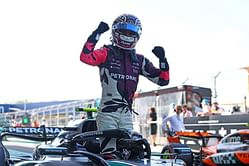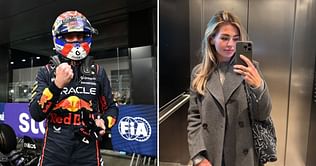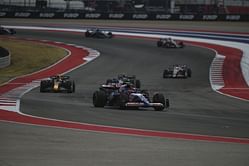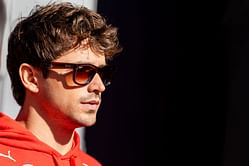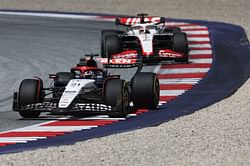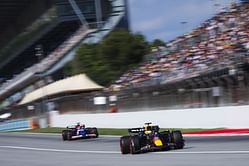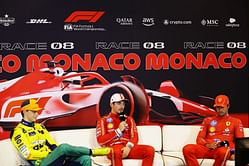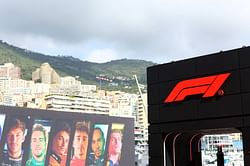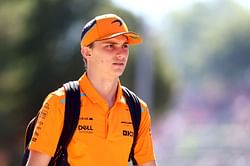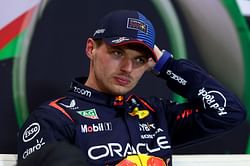F1 qualifying is the process by which the starting order for any F1 Grand Prix is determined. All drivers participate in qualifying sessions to see who can post the fastest time on the stopwatch and take their place at the top of the grid. A driver's pace in F1 qualifying is directly correlated to his starting position on race day.
F1 qualifying is a significant part of the entire race weekend experience and can be crucial in determining the outcome on the asphalt on race day.
How does F1 qualifying work?
F1 qualifying can be as exciting as they are confusing. The entire qualifying showdown can be broken down into three smaller sessions. They are referred to as Q1, Q2, Q3 by drivers, teams, and pundits alike.
All drivers can go out on track and set their fastest time on the clock. Following a process of elimination that is determined by the fastest times, drivers secure their starting place on the grid for a Grand Prix.
What are the rules of F1 Qualifying?
Some of the basic rules of qualifying are to not impede drivers on a flying lap, not cut corners or chicanes on- track. The teams also have to follow the rules of Parc-Ferme. The term is French for 'closed park'. Once cars have left their respective garages, cars in Parc-Ferme can be weighed and inspected by FIA officials.
Each car is considered to be in pre-race Parc-Ferme from the moment it leaves the garage for the first qualifying session and remains in Parc-Ferme till the time of the race. During this period, only certain changes and modifications can be made to the car, based on a list given by the FIA. Any major component change carries with it grid penalties that vary on the number of extra changes made to the cars.
After an F1 qualifying session, teams can only work on a car for 210 minutes before they are sealed and covered. Cars are unsealed once again 300 minutes before a race but major modifications cannot be made without incurring penalties.
F1's rules dictated that should a driver get through to the final qualifying session, they must start the race on the tires that got them through to Q3. This, however, has been scrapped going forward into the 2022 season and teams have free choice of tires for the race day now.
F1 Qualifying dates 2022
F1 Bahrain GP - 19 March 2022
F1 Saudi Arabia GP - 26 March 2022
F1 Australian GP - 9 April
F1 Emilia Romagna GP - TBC 2022
F1 Miami GP - 7 May
F1 Spanish GP - 21 May 2022
F1 Monaco GP - 28 May 2022
F1 Azerbaijan GP - 11 June 2022
F1 Canadian GP - 18 June 2022
F1 British GP - 2 July
F1 Austrian GP - TBC 2022
F1 French GP - 23 July 2022
F1 Hungarian GP - 30 July 2022
F1 Belgian GP - 27 August
F1 Dutch GP - 3 September 2022
F1 Italian GP - 10 September 2022
F1 Singapore GP - 1 October 2022
F1 Japanese GP - 8 October
F1 United States GP - 22 October 2022
F1 Mexican GP - 29 October 2022
F1 Brazilian GP - TBC
F1 Abu Dhabi GP - 19 November
Where to watch F1 Qualifying?
F1 Qualifying is broadcast live on F1 TV and on different sports channels, depending on your region.
F1 Qualifying: Q1, Q2, Q3 explained
The first session, Q1, is normally 18 minutes long and all cars are allowed to get on track and see who can go around the fastest. The 15 best drivers on the team sheet are allowed to stay on for the next session while the remaining five become the first victims of the process of elimination.
The 15 remaining drivers go into Q2, which is 15 minutes long, and once again the same method as Q1 is used to determine the 10 fastest cars based on individual lap times.
The final session Q3 is where most of the drama and action unfolds. In the final 12 minutes of F1 qualifying, all the remaining drivers try to get the fastest time to see who will start on pole and who follows suit. In this session cars normally go out in two waves, once at the start of the session and once right towards the end. This is done mainly for the purposes of track evolution. Teams wait till the end of a session because a track can evolve to its fastest right towards that limit. the longer the wait, the faster the track could potentially be.
Once this is done, based on who had the fastest time in Q3, the grid is set for the race in descending order.
This procedure is applicable for all normal race weekends. In the case of sprint weekends, the qualifying process happens on Friday in the above-mentioned method to determine the starting grid for the sprint (a shorter race than the average Grand Prix). The outcome of the sprint race will then determine the grid order for the feature race on Sunday.
What happens if F1 Qualifying is canceled?
In the event of F1 qualifying being canceled on account of bad weather, qualifying will take place before the race.
